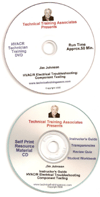I recently watched a news program that indicated college attendance is down from previous years due to several reasons, including the escalating cost of attendance. At the same time, attendance at trade schools is up for the same reason: cost.
Right out of high school, I started with a trade school instead of attending a college by learning the drafting trade in one year’s time. While my friends went to college, I was hired as a trainee draftsperson. Those friends, and/or their families, paid for college while I got a job in an engineering firm and was paid to learn HVAC drafting. In my mind, I justified my career course by knowing I was getting paid (not a lot) while I was learning.
My friends got an academic and theoretical education, while I got the practical education. It wasn’t until 10 years into my HVAC tenure that I began to attend evening classes to pursue a college degree. The company I worked for would reimburse 100% of my cost if I received an A, 75% for a B, and 50% for a C. Anything less, which I never received, the cost would have been 100% my responsibility.
Empowered by both practical and theoretical knowledge, I recognized both lines of thought are essential to be successful in the building industry. In time, through managing other employees, I discovered some college graduates are drawn to overthinking HVAC designs, resulting in a financial loss based on the engineering fee. These individuals struggled to see the practical side of HVAC engineering that contractors often claim to be able to “value engineer.” These situations fell into the “lose-lose” category: loss of fee/profit with design engineering effort and loss of credibility when the contractor provides a more cost-effective HVAC design solution.
When it comes to the HVAC designer/practitioner, I recognized some of these individuals would size pipe and sheet metal distribution lacking knowledge regarding the basics of fluids. The designer/practitioner would often rely upon the phrase, “What did we do last time,” when conceptualizing the optimum HVAC design for the application, e.g., forced hot water system, central air system, etc. The loss here was that the employee was relying on what worked in the past, missing the opportunity to investigate new, possibly more energy-efficient, and more environmentally friendly HVAC system solutions.
To this point, I’ve often found neither college graduates nor designers/practitioners to be familiar with the 2022 ASHRAE Handbook – HVAC Systems and Equipment, Chapter 1, “HVAC System Analysis and Selection,” when beginning new projects.
Whether one takes the college route or the trade school route, continuing education and years of experience blend together to make one a well-rounded professional. With both skills working for the employee, they need to be proficient in the education that comes with HVAC. That education includes being knowledgeable of the technical data found in the four ASHRAE Handbooks and learning from the HVAC trades, e.g., installation of pipe, sheet metal, equipment, and automatic control systems.
So, which is it, college or trade school? Well, you actually need both.








